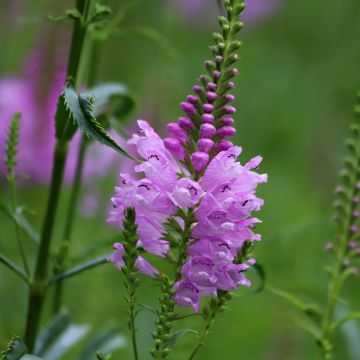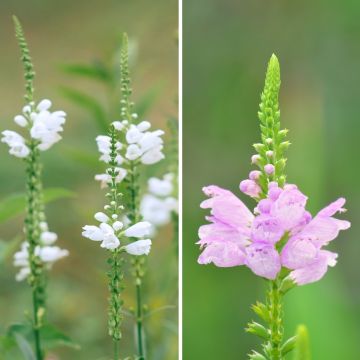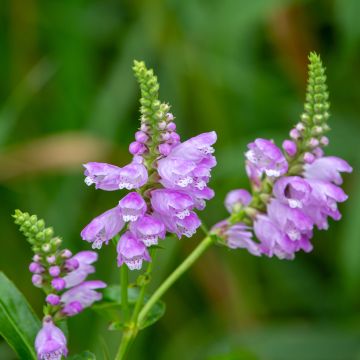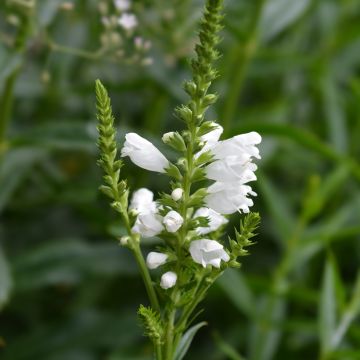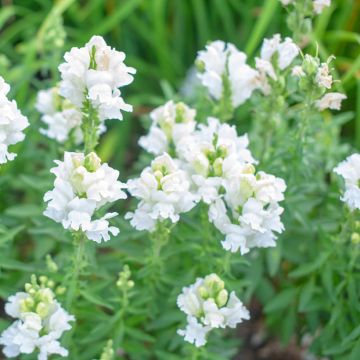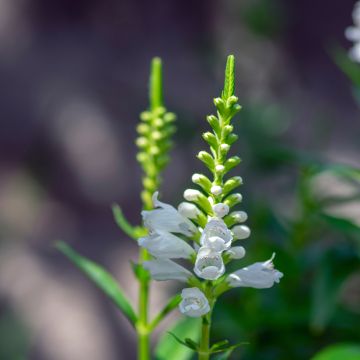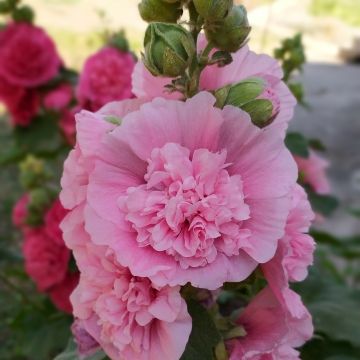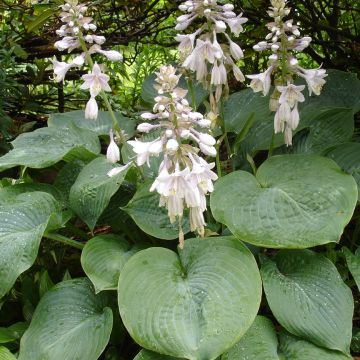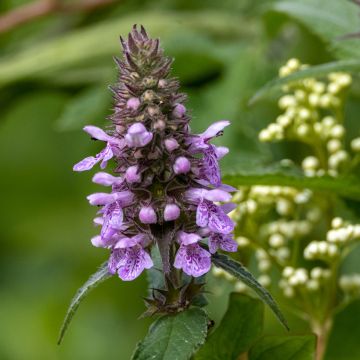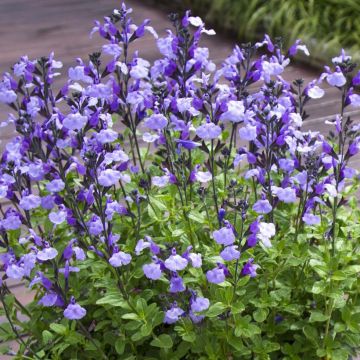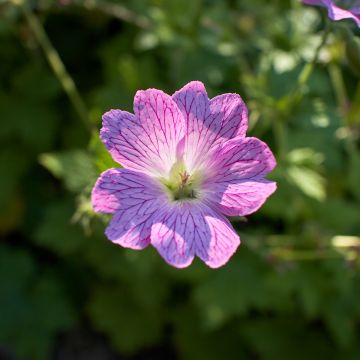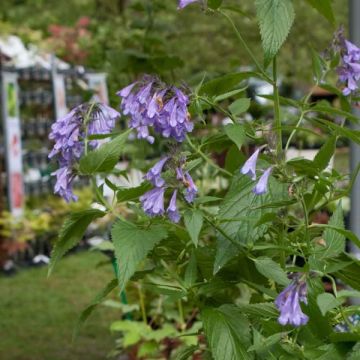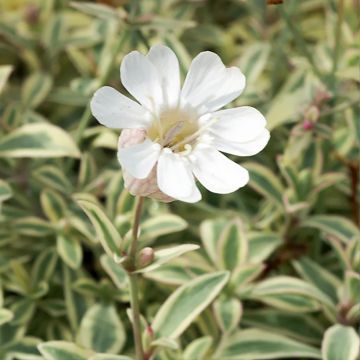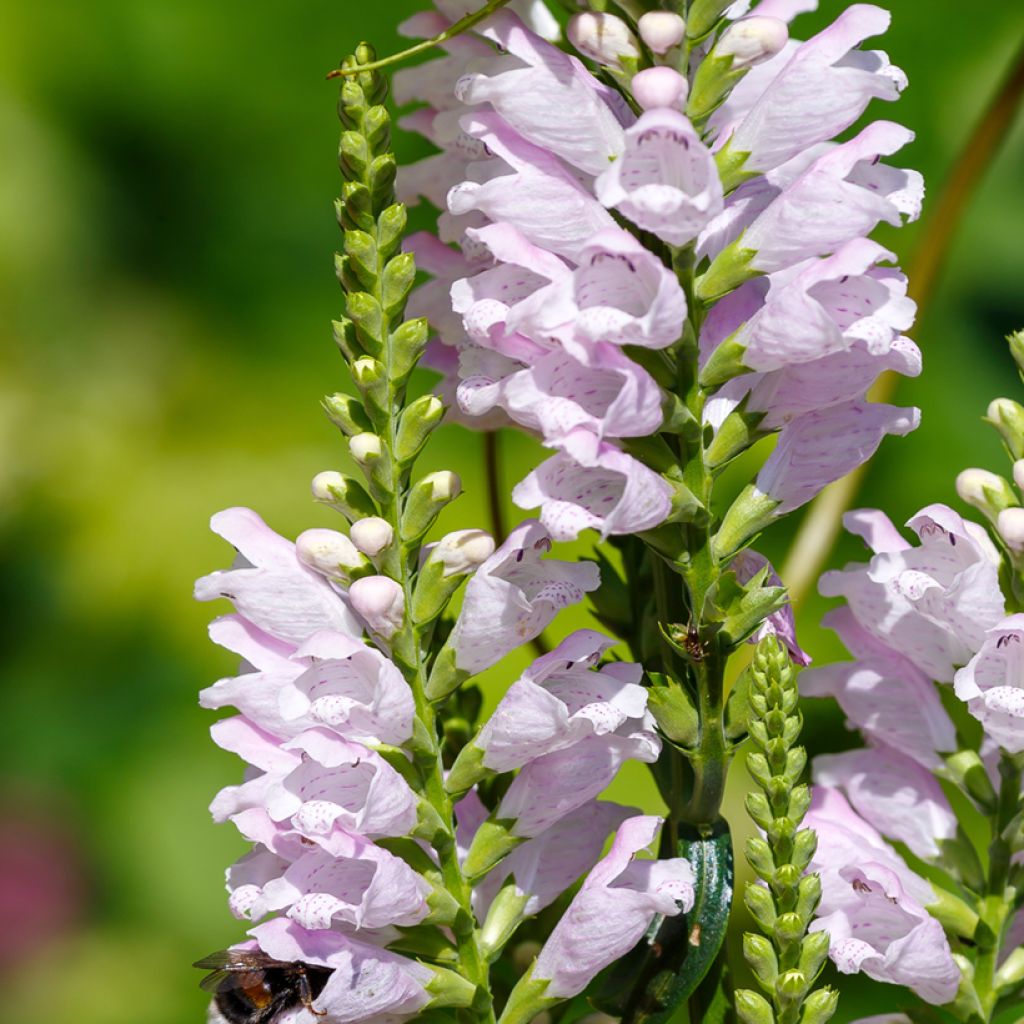

Physostegia virginiana Galadriel - Obedient Plant
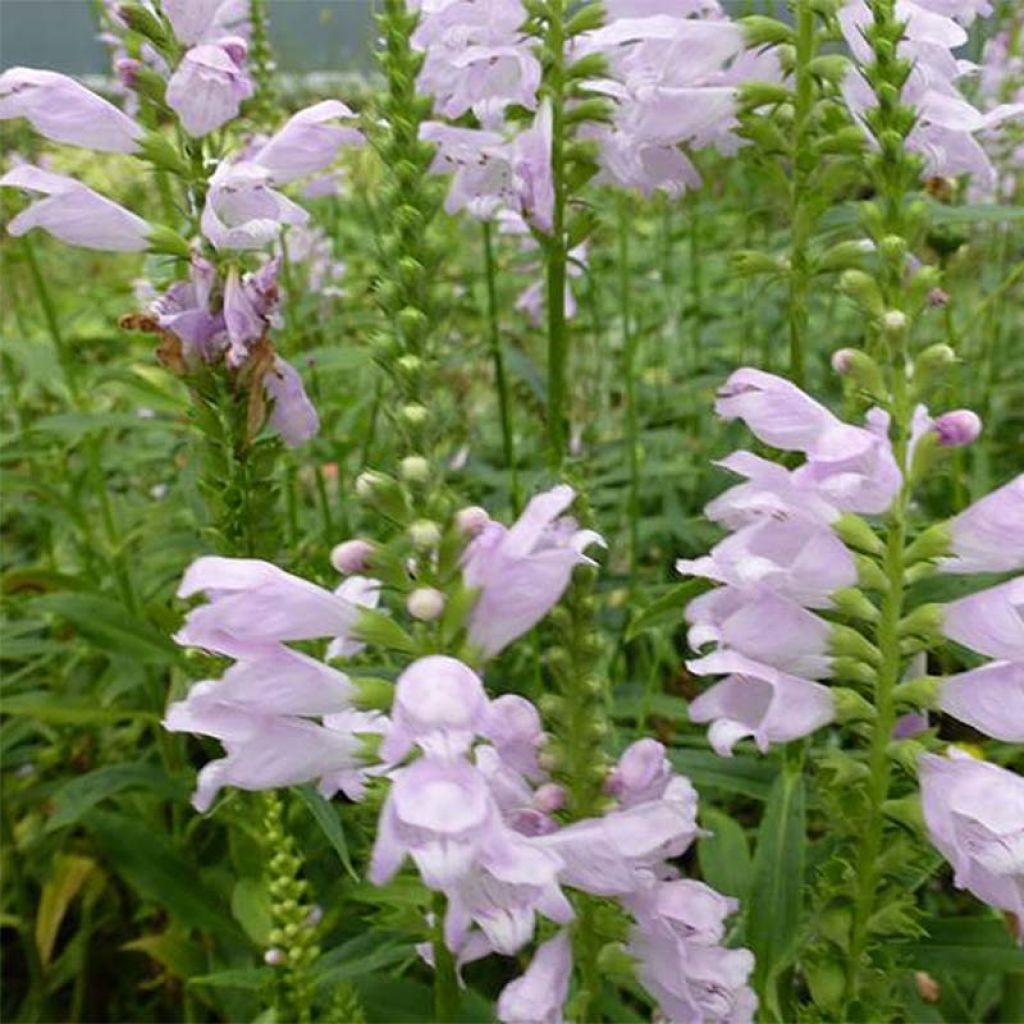

Physostegia virginiana Galadriel - Obedient Plant
Physostegia virginiana Galadriel - Obedient Plant
Physostegia virginiana Galadriel
Obedient plant, Virginian False Dragonhead, Accommodation Flower, American Heather, Lady of the Lake, Lion's Heart, Mexican Heath
Why not try an alternative variety in stock?
View all →This plant carries a 12 months recovery warranty
More information
We guarantee the quality of our plants for a full growing cycle, and will replace at our expense any plant that fails to recover under normal climatic and planting conditions.
From €5.90 for pickup delivery and €6.90 for home delivery
Express home delivery from €8.90.
Does this plant fit my garden?
Set up your Plantfit profile →
Description
Physostegia virginiana 'Galadriel' is a dwarf variety that has pastel flowers, in light lavender-pink. When in bloom, at the height of summer, this robust perennial creates a small display in the garden. Forming a wide clump in wet soils that it loves, this plant has mischievous flowers that permanently change orientation when touched. Physostegia are very beautiful plants for riverbanks and wetlands, which also provide excellent cut flowers, very long-lasting in a vase.
Physostegia virginiana belongs to the Lamiaceae (Scrophulariaceae) family, it is related to snapdragons and foxgloves for example. It is native to the eastern and central parts of North America, where it can be found along rivers, in waterlogged meadows or even in wetlands. 'Galadriel' is a dwarf cultivar with pink-mauve flowers. It is a rhizomatous herbaceous perennial plant, with rapid growth, that colonises the soil. From spring, it forms an erect clump of unbranched stems, 45 cm (18in) in all directions. The deciduous vegetation disappears in winter. The spikes, 10-12cm (4-5in) in length, covered with pastel tubular flowers, develop in the middle of summer, between June and July, at the top of the stems. The flowers are attached to the axis by a small organ that acts as a joint, allowing them to orient themselves in any direction and maintain their position. They are arranged in 4 rows. The deciduous foliage is composed of lanceolate leaves, 10 cm (4in) long and narrow, with toothed edges, which are shiny green. The plant has a semi-suckering stump, with large white roots resembling bindweed roots, allowing it to slowly spread. The vegetation disappears in winter and regrows in spring.
Easy to grow in moist soil, Physostegia virginiana 'Alba' is often planted along the edge of a body of water or used for making bouquets, as its flowers are both graphic and hold up well in vases for floral arrangements. Along the water's edge, it can accompany other wetland edge plants such as river anemone, hastate verbenas, 'Houttuynia Chameleon' or narrow-leaved cottongrass. It will also find its place in consistently moist flower beds, alongside summer asters (Aster novae angliae), the soft inflorescences of 'Phantom' hydrangea, or pastel-coloured groundcover roses.
Report an error about the product description
Physostegia virginiana Galadriel - Obedient Plant in pictures
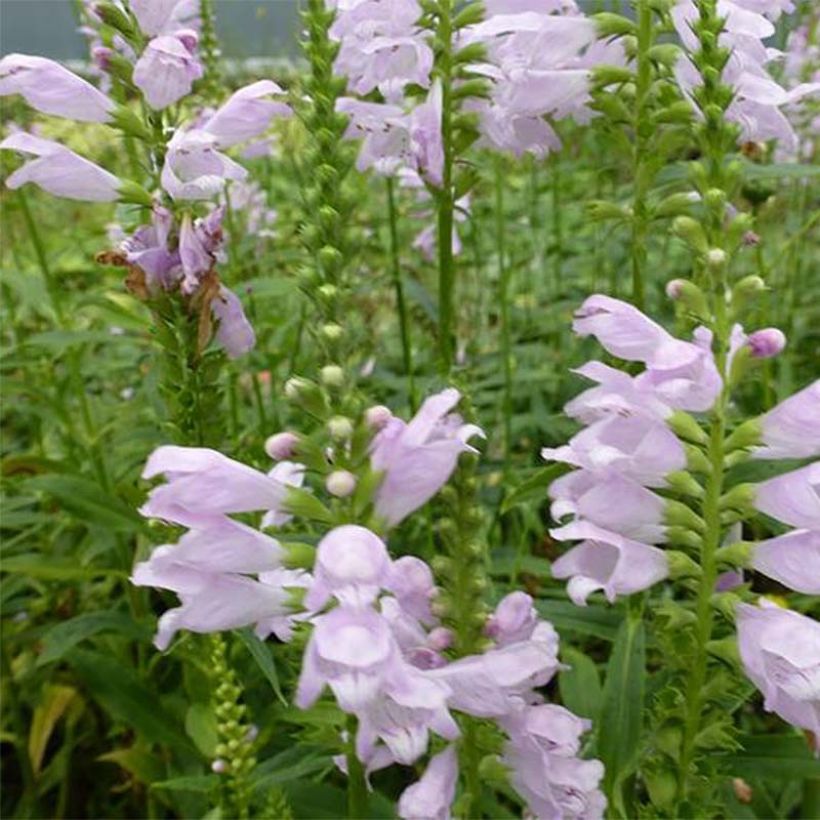

Flowering
Foliage
Plant habit
Botanical data
Physostegia
virginiana
Galadriel
Lamiaceae
Obedient plant, Virginian False Dragonhead, Accommodation Flower, American Heather, Lady of the Lake, Lion's Heart, Mexican Heath
Cultivar or hybrid
Other Physostegia
Planting and care
The Physostegia virginiana 'Galadriel' can be planted in spring or autumn, five feet per square metre, in garden soil that is always slightly damp to very damp, preferably non-calcareous, sheltered from strong winds and in the sun. The soil must not dry out in summer. Despite its vigorous growth, this plant does not like competition from other roots. Mulch the soil in June with lawn clippings. Divide the clumps as late as possible, about every five years. This plant is remarkable in sandy and loamy soils.
Planting period
Intended location
Care
This item has not been reviewed yet - be the first to leave a review about it.
Summer flowering perennials
Haven't found what you were looking for?
Hardiness is the lowest winter temperature a plant can endure without suffering serious damage or even dying. However, hardiness is affected by location (a sheltered area, such as a patio), protection (winter cover) and soil type (hardiness is improved by well-drained soil).

Photo Sharing Terms & Conditions
In order to encourage gardeners to interact and share their experiences, Promesse de fleurs offers various media enabling content to be uploaded onto its Site - in particular via the ‘Photo sharing’ module.
The User agrees to refrain from:
- Posting any content that is illegal, prejudicial, insulting, racist, inciteful to hatred, revisionist, contrary to public decency, that infringes on privacy or on the privacy rights of third parties, in particular the publicity rights of persons and goods, intellectual property rights, or the right to privacy.
- Submitting content on behalf of a third party;
- Impersonate the identity of a third party and/or publish any personal information about a third party;
In general, the User undertakes to refrain from any unethical behaviour.
All Content (in particular text, comments, files, images, photos, videos, creative works, etc.), which may be subject to property or intellectual property rights, image or other private rights, shall remain the property of the User, subject to the limited rights granted by the terms of the licence granted by Promesse de fleurs as stated below. Users are at liberty to publish or not to publish such Content on the Site, notably via the ‘Photo Sharing’ facility, and accept that this Content shall be made public and freely accessible, notably on the Internet.
Users further acknowledge, undertake to have ,and guarantee that they hold all necessary rights and permissions to publish such material on the Site, in particular with regard to the legislation in force pertaining to any privacy, property, intellectual property, image, or contractual rights, or rights of any other nature. By publishing such Content on the Site, Users acknowledge accepting full liability as publishers of the Content within the meaning of the law, and grant Promesse de fleurs, free of charge, an inclusive, worldwide licence for the said Content for the entire duration of its publication, including all reproduction, representation, up/downloading, displaying, performing, transmission, and storage rights.
Users also grant permission for their name to be linked to the Content and accept that this link may not always be made available.
By engaging in posting material, Users consent to their Content becoming automatically accessible on the Internet, in particular on other sites and/or blogs and/or web pages of the Promesse de fleurs site, including in particular social pages and the Promesse de fleurs catalogue.
Users may secure the removal of entrusted content free of charge by issuing a simple request via our contact form.
The flowering period indicated on our website applies to countries and regions located in USDA zone 8 (France, the United Kingdom, Ireland, the Netherlands, etc.)
It will vary according to where you live:
- In zones 9 to 10 (Italy, Spain, Greece, etc.), flowering will occur about 2 to 4 weeks earlier.
- In zones 6 to 7 (Germany, Poland, Slovenia, and lower mountainous regions), flowering will be delayed by 2 to 3 weeks.
- In zone 5 (Central Europe, Scandinavia), blooming will be delayed by 3 to 5 weeks.
In temperate climates, pruning of spring-flowering shrubs (forsythia, spireas, etc.) should be done just after flowering.
Pruning of summer-flowering shrubs (Indian Lilac, Perovskia, etc.) can be done in winter or spring.
In cold regions as well as with frost-sensitive plants, avoid pruning too early when severe frosts may still occur.
The planting period indicated on our website applies to countries and regions located in USDA zone 8 (France, United Kingdom, Ireland, Netherlands).
It will vary according to where you live:
- In Mediterranean zones (Marseille, Madrid, Milan, etc.), autumn and winter are the best planting periods.
- In continental zones (Strasbourg, Munich, Vienna, etc.), delay planting by 2 to 3 weeks in spring and bring it forward by 2 to 4 weeks in autumn.
- In mountainous regions (the Alps, Pyrenees, Carpathians, etc.), it is best to plant in late spring (May-June) or late summer (August-September).
The harvesting period indicated on our website applies to countries and regions in USDA zone 8 (France, England, Ireland, the Netherlands).
In colder areas (Scandinavia, Poland, Austria...) fruit and vegetable harvests are likely to be delayed by 3-4 weeks.
In warmer areas (Italy, Spain, Greece, etc.), harvesting will probably take place earlier, depending on weather conditions.
The sowing periods indicated on our website apply to countries and regions within USDA Zone 8 (France, UK, Ireland, Netherlands).
In colder areas (Scandinavia, Poland, Austria...), delay any outdoor sowing by 3-4 weeks, or sow under glass.
In warmer climes (Italy, Spain, Greece, etc.), bring outdoor sowing forward by a few weeks.

































